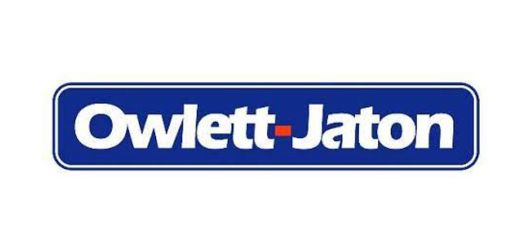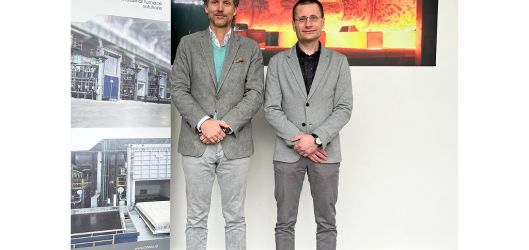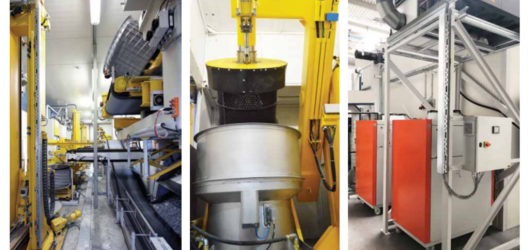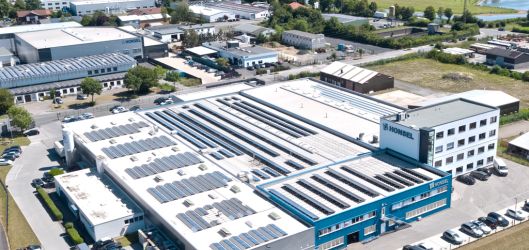
Reinhardt Managing Director Dr.-Ing. Gerhard Bosch & Reinhardt Technical Sales Dipl.-Ing. (FH) Sven-Michael Tolksdorf share their insights into the cutting edge of heat treatment...
Reinhardt GmbH is a competent worldwide partner in the construction of industrial furnaces, heat treatment systems, coating systems and slush moulding systems.
A medium-sized company headquartered in the Black Forest town of Villingen- Schwenningen, Reinhardt GmbH is one of the global market leaders for thermotechnical solutions in temperature ranges up to 650 °C in the areas of industrial furnaces and heat treatment, coating and slush moulding systems. In the plastics sector, the systems are used for preheating, drying and tempering, but also for conditioning and humidifying. Reinhardt’s products are characterised by significantly higher demands on the accuracy of the systems, which is achieved by means of appropriate design measures and high-quality measurement technology.
For decades, it has been common practice to document thermotechnical processes. At first, this was done using mechanical-electrical recorders. Paper printouts were often simply enclosed with the batch and filed away by order. Later, the storage medium changed – floppy disk, USB stick etc. – but the basic principle did not change fundamentally.
Over the years, customer requirements and expectations have continued to increase, with medical and pharmaceutical technology in the vanguard. Today, these
higher customer requirements with respect to traceability and temperature accuracy are common in all industrial sectors, and furnace systems must therefore
also meet these customer requirements.
Examples include the AMS 2750 in the aerospace industry or CQI-9 in the automotive sector. One security aspect that is often also discussed is prevention of the manipulation of data, which must be implemented with an adequate level of security, whether by means of intrinsic data encoding or secure processes. For company and production control, it must be possible to view and document all relevant production parameters anytime and anywhere.
Orders or product batches are tracked as they pass through production and it is possible to see centrally where and how an operation was carried out at any time during the manufacturing process. This form of automated batch data acquisition is most easily seen in the identification of batches with scanners before each process, which again checks
the processes and, with intelligent control, identifies which process is to be carried out in the subsequent operation.
These three requirements became relevant to the idea of Industry 4.0 years ago. According to Wikipedia, “industrial production should be dovetailed with modern information and communication technology”. As far back as the early days of BITNET at the beginning of the 1980s, the focus was on data exchange or remote access, which at that time was simply described USING FTP (file transfer protocol), SMTP and Telnet. More than 20 years ago, we asked ourselves why chat and other forms of communication were possible on the internet, while a connection to a machine was established point-to-point in the old-fashioned way using a modem.
In the meantime, security issues have arisen, with access to a control system now encrypted via a VPN connection. As a system manufacturer, we face a special challenge: not only does an interface have to be provided to our customers, but also within the machine or system itself. Frequently, competing fieldbus systems are used because the components we use are assigned to a wide range of different industries: CAN for components from the automation industry, Profibus / Profinet or Modbus from the process and automation engineering sector. We therefore also integrate across industries. The decision as to whether individual components are then connected in the traditional way via digital or analogue inputs, or via a bus interface, depends on the frequency of use and the amount of data exchanged.
The system as a whole should not be made unnecessarily complicated. In the networking of company and production control, the individual machines or industrial systems, which also include the thermotechnical systems provided by Reinhardt GmbH, are connected with an ERP system (enterprise resource planning), which today goes far beyond the concept of any PPS (production planning system). Given the heterogeneous hardware structure, it is essential that platform-independent, service oriented architecture such as OPC UA is used. The goal of standardisation is to reduce the time and effort spent on communication, making more time available for the selection of information. OPC UA uses only a single protocol, which can be used for all data in the production process. It is independent of both platform and manufacturer. Security mechanisms are already integrated. All components from individual sensors to the ERP system can be in communication. The basis for this is a client-server principle. An important aspect is that the data fits into the ERP system. For example, only a good/bad message and certain benchmark temperatures and treatment times are transferred to the ERP system. The actual temperature trends, which are more complex and cumbersome to embed in an ERP system, are stored separately, in most cases via an email distributor or FTP.
With these tools, the mechanical engineering sector is fit for Industry 4.0. We have been using this for years – our controllers have an Ethernet connection, making all of the possibilities of this worldwide linking possible. All technically feasible adaptations in the control technology can be implemented, in order to facilitate processes and handling at the subsequent place of use. In addition to integration into a higher-level PLC, the systems themselves are equipped with a PLC. This enables remote control, remote monitoring and the documentation of peripherals over the intranet or internet.
Data acquisition/storage – directly or over the internet – can be optimised to each customer’s requirements. Warnings and error messages are available anywhere in the world via GSM networks or e-mail. If required, third-party devices can also be integrated.
Within our systems, time-critical and noncritical functions are separated, whereby a cycle time of less than 10 msec is normally sufficient for time-critical functions. These result from switching and reaction times for sensors and switching outputs. Functions that are not time-critical can be easily handled using local Ethernet connections. A reading of the current literature shows that this distinction will also be a decisive factor in the future, whereby the decision is newly framed within the protocol, so that multiple networks are no longer necessary.
As a basic principle, we offer a proven and flexibly expandable complete system.
With adapted technology, the system can be adapted to a wide variety of different requirements.
REINHARDT CONTROLLERS OFFER THESE FEATURES >
- Continuous condition monitoring and data storage
- Automatic backup of data on your computer system / backup system
- Individual recording of data (short and long-term storage)
- Continuous remote monitoring of machines
- Remote control of machines
- Simple operation via internet browser as web HMI or local HMI on IPC panel
- Simple networking via your intranet/Ethernet



